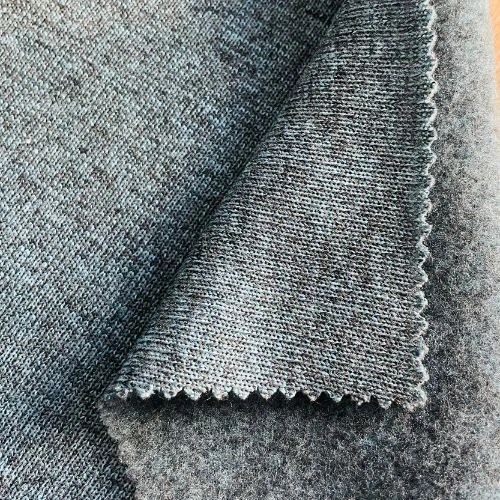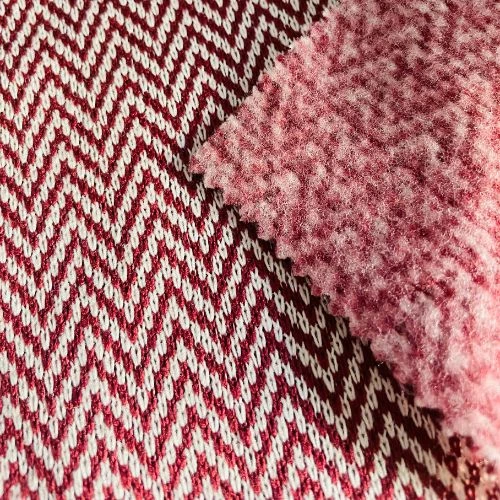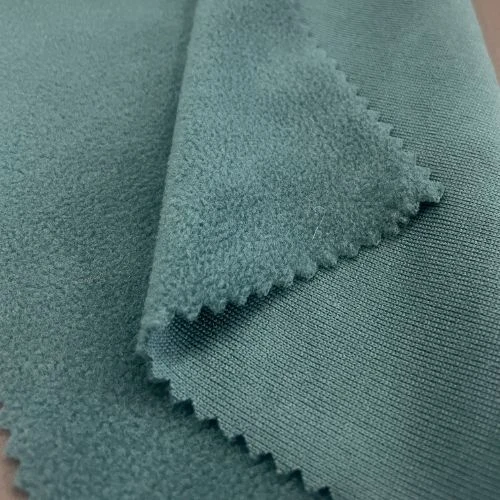|
Sweater Fleece |
Also Known as: Knit fleece, Performance fleece |
|
Manufacturing Process |
Knitting, brushing, and finishing with anti-pilling and moisture-wicking treatments |
|
Appearance |
Knit-like outer surface with a smooth, fleecy interior |
|
GSM Range |
200–350 GSM |
|
Composition Range |
100% polyester or polyester blends with 5–10% spandex |
|
Construction Range |
Circular knit, brushed fleece |
|
Functionality |
TPU, AC, W/R (Water-Resistant), Anti-Pilling |
|
Possible Thread Density Range |
190T–300T |
|
Count Variations |
75D/144F, 100D/36F, 150D/144F |
|
Full Width |
57/58", 59/60" |
|
Fabric Breathability |
Medium to high |
|
Moisture-Wicking Abilities |
High |
|
Heat Retention Abilities |
Excellent |
|
Stretchability |
Medium to high, especially with spandex content |
|
Prone to Pilling/Bubbling |
Low, due to anti-pilling treatments |
|
Country of First Production |
United States (1980s) |
|
Biggest Exporter Country |
China (Estimated 60% of global export quantity) |
|
Recommended Washing Temperatures |
Cold water (30–40°C) |
|
Applications |
Jackets, hoodies, vests, outdoor gear, scarves, hats, gloves, blankets |
Table Of Contents
What is Sweater Fleece Fabric?
Sweater fleece fabric is one side knitted with an interlock and the other is brushed fleece. It’s a hybrid material. It combines a knitted sweater's aesthetic with the fleece's warmth and performance. It uses synthetic fibers like polyester or blends. Recycled polyester works well with sweater fleece fabric. Sometimes company added elastane for stretch.
This fleece fabric's unique construction gives it a smooth, knitted exterior and a soft, fleecy interior. Think of it as your favorite sweater and a performance fleece jacket rolled into one.
Types
Types of sweater fleece fabric are as follows:
- Polyester Sweater Fleece

- Made from 100% polyester.
- Lightweight and durable.
- Offers excellent moisture-wicking and quick-drying properties.
- Commonly used in activewear and outdoor apparel.
- Blended Sweater Fleece
- Combination of polyester with cotton, wool, or spandex.
- Provides enhanced comfort and flexibility.
- Ideal for casual and everyday clothing.
- Wool-Blend Sweater Fleece
- Blends polyester with wool for added warmth and softness.
- Superior insulation and natural odor resistance.
- Perfect for cold-weather applications like jackets and vests.
- Recycled Sweater Fleece
- Made from recycled polyester or other eco-friendly materials.
- Sustainable and environmentally conscious.
- Increasingly popular for green fashion and outdoor brands.
- Bonded Sweater Fleece
- Features a bonded layer, often with TPU or PU coatings.
- Provides water resistance and windproof capabilities.
- Suitable for extreme outdoor conditions.
Characteristics
Sweater fleece fabric stands out for its unique properties, including:
- Appearance: A knit-like outer surface resembling traditional sweaters.
- Texture: Soft and plush on the inside, providing excellent comfort.
- Weight Range: Typically ranges from 200 GSM to 350 GSM, balancing warmth and lightness.
- Composition Details: Usually 100% polyester or polyester blends with a touch of spandex for flexibility.
How is Sweater Fleece Fabric Made?
Sweater fleece fabric is crafted through a meticulous process:
- Material Selection: 100% polyester or blended yarns are chosen for durability. 96F/75D Filament yarn is widely used for sweater fleece fabric.
- Knitting and Fleece Finish: The exterior is interlock knitted to resemble a sweater, while the interior is brushed to create a fleecy texture.
- Special Treatments: Brushed by spike cylinder. Anti-pilling and moisture-wicking finishes enhance the fabric's performance.
Properties
- Warmth and Comfort: Retains heat effectively, making it ideal for colder climates.
- Moisture-Wicking Abilities: Draws sweat away, keeping the wearer dry.
- Breathability: Ensures comfort during extended wear.
- Stretchability and Durability: Offers flexibility without compromising on longevity.
Applications
Sweater fleece fabric is versatile and used in various applications:
- Everyday Clothing: Hoodies, pullovers, and casual tops.
- Outdoor Apparel: Jackets and vests designed for hiking or camping.
- Accessories: Scarves, gloves, and even beanies.
Advantages
Why choose sweater fleece fabric over others? Here’s why from my experience:
- Versatility: Suitable for both casual and active wear.
- Style and Aesthetics: Combines a classic look with modern performance.
- Easy Maintenance: Machine washable and wrinkle-resistant.
Caring for Sweater Fleece Fabric
Taking care of sweater fleece fabric ensures its longevity:
- Washing Guidelines: Use cold water (30–40°C) and mild detergent. Please avoid bleach.
- Drying and Storage Tips: Air dry or tumble dry on low heat. Store in a cool, dry place.
- Prevent Pilling: Wash inside out and avoid overloading the machine.
FAQs
1. Is sweater fleece fabric suitable for winter?
Yes, its excellent heat retention makes it perfect for cold weather.
2. Can sweater fleece be used for athletic wear?
Absolutely! Its moisture-wicking and breathable properties are great for active lifestyles.
3. Does sweater fleece fabric stretch?
Yes, especially when blended with spandex or elastane.
4. How do I prevent sweater fleece from pilling?
Wash inside out, use gentle cycles, and avoid harsh detergents.
5. Is sweater fleece eco-friendly?
Some brands offer eco-friendly options using recycled polyester. Check the product label for details.


















Comments - 00
Leave A Reply
Thanks for choosing to leave a comment.